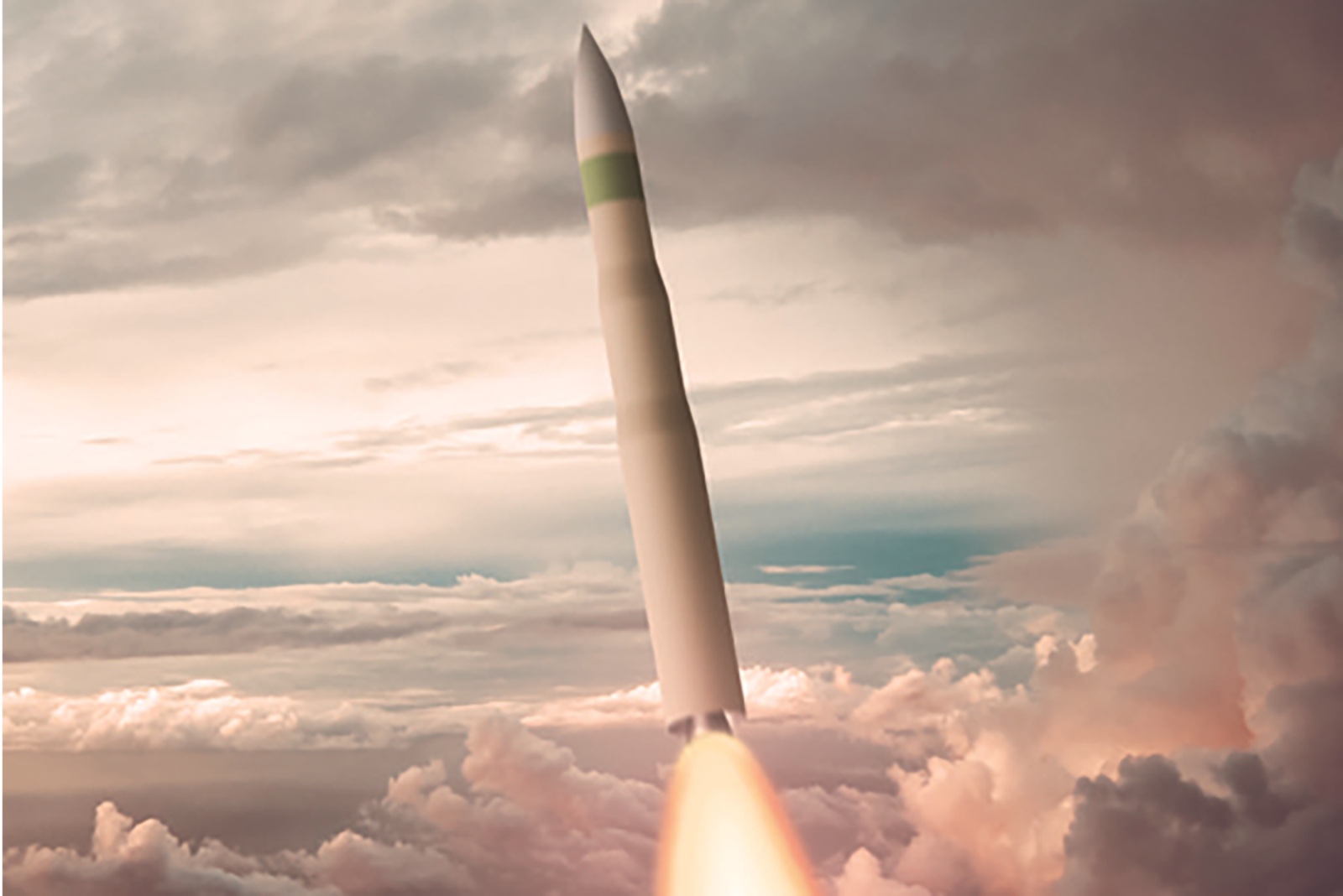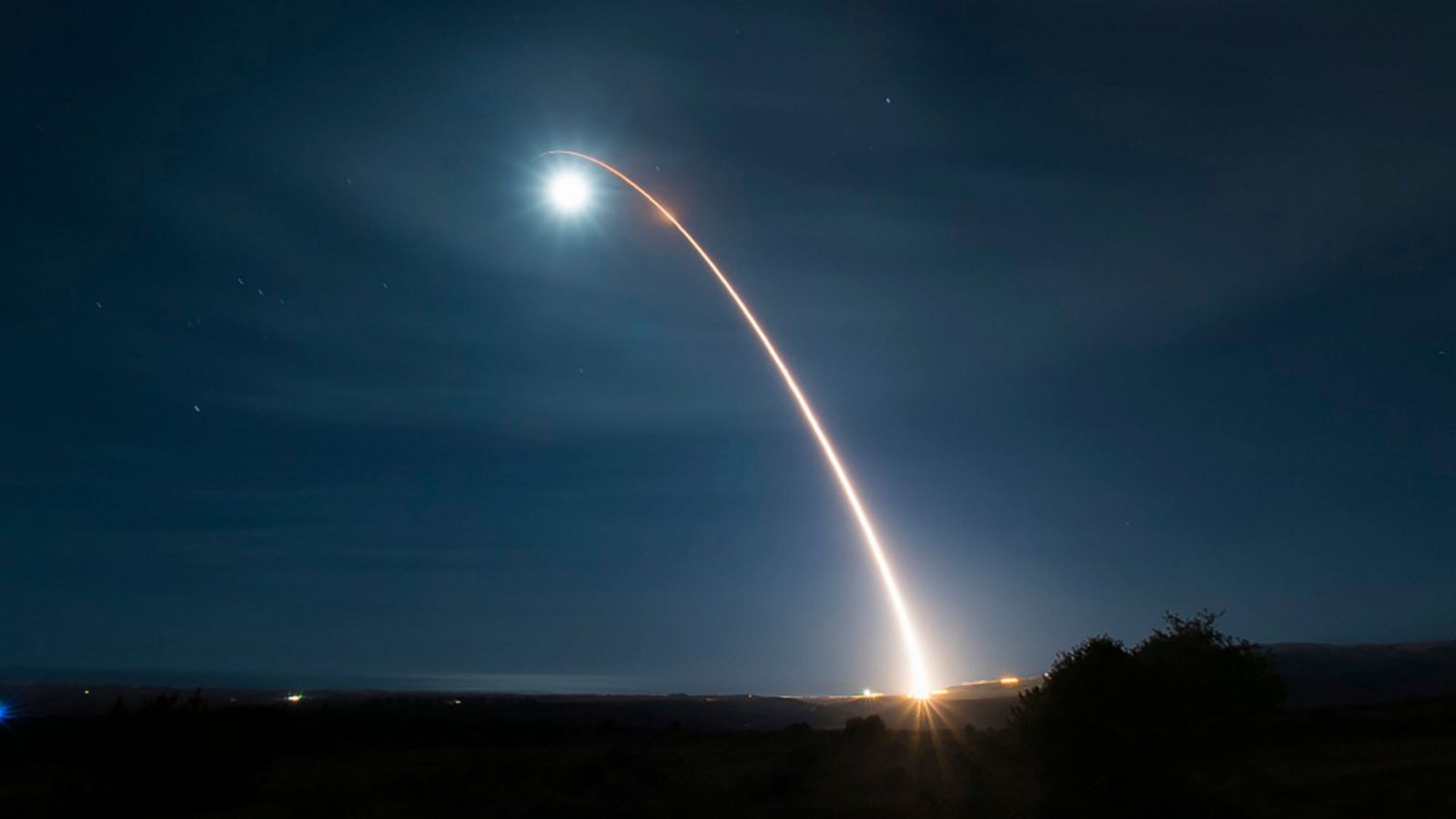Northrop Grumman has announced the test-firing of the under-developed LGM-35A intercontinental ballistic missile’s (ICBM) second-stage rocket motor that would push it outside the atmosphere after launch. Results from the test would be compared with computer-generated predictions and models while informing future technical tweaks.
Also formerly known as the Ground-Based Strategic Deterrent (GBSD) program, the US Air Force project aims to have a new land-based nuclear strike missile to replace its Cold War-era LGM-30G Minuteman III. The Sentinel is a three-stage missile.
Expected to cost roughly US$100 billion over the next few years, the program kicked off when Northrop Grumman received a US$13.3 billion contract in 2020 to develop the missile. The missile is presently in the “engineering, manufacturing and development phase.”
The project has, however, generated some controversy among US nuclear experts and strategists, who point to the prohibitive cost and the lack of need for such a weapon. They stress that the current American nuclear arsenal meets Washington’s first and retaliatory strike capabilities while also being adequately survivable if the mainland sustains an atomic attack.
Rocket Motor Tested
The test that took place in the USAF’s Arnold Engineering Development Complex at Tullahoma, Tennessee, “was conducted in a vacuum chamber simulating real-world flight environmental conditions the solid-rocket motor would experience during high-altitude and space flight,” according to a statement by the company.

Northrop did not disclose the exact date or duration of the burn. Engineers will study the test data “to determine how motor performance matched digitally engineered model predictions, critical to maturing the design and lowering risk.”
Air and Space Forces quoted a statement from Northrop’s Vice-President and the Sentinel program’s manager, Sarag Willoughby, who said the test “moves (the company) forward for qualification testing in partnership with the Air Force.” It provides “an accurate reading of our design’s performance and now informs our modeling and designs,” she said.
Northrop and USAF are now considering putting “both” the first and second rocket stages through a series of qualification tests. The firm announced in early 2023 that it had conducted a static test of the missile’s first-stage motor and hypersonic wind tunnel tests to validate its design.
Current US Nuclear Arsenal Is Enough
Western nuclear strategists have suggested that the US’s stealthy and qualitatively superior ballistic missile nuclear submarines and stealth bombers like the B-2 Spirit have enough first or retaliatory strike potential. It makes the US arsenal survivable to any Russian or Chinese nuclear strike aimed at destroying its nuclear weapons.
Writing in Foreign Affairs, Charles L. Glaser, James Action, and Steve Fetter point out that the US nuclear force already “contains a huge amount of survivable destructive potential.”

“Each United States’ 14 Ohio-class submarines carries 20 ballistic missiles, each carrying up to eight warheads, yielding 90 to 455 kilotons. A typical submarine carrying an average of 90 warheads can inflict the damage required for assured destruction.”
The US Navy usually has between eight and ten ballistic missile submarines at sea, not to mention the 66 bombers available for nuclear missions. Around 70% of the US’s nuclear weapons are on these submarines and stealth bombers. The rest are in the continental US, in nuclear missile silos, such as the ones that release the Minuteman III ICBM.
An adversary must fire several hundred missiles to target all the ground-based ICBMs. This would still leave unharmed the bombers deployed in various bases in Europe in Bomber Task Force (BTF) missions and the nuclear-powered and Trident missile-armed SSBN submarines, some of which are always on patrol.
They would easily be in a position to carry out a retaliatory launch. “Given these capabilities, under an infrastructure-targeting doctrine, the United States would simultaneously meet the requirements for deterring Russia and China. (An) expansion of its nuclear force would (therefore not) be necessary,” the article said.
Matt Korda, a senior research fellow from the Nuclear Information Project from the Federation of American Scientists (FAS), was also quoted in an article in Newsweek, saying, “The failure wouldn’t necessarily have a bearing on the program as a whole or the viability of the ICBM force.”
Korda added that most nuclear warheads are mounted on Trident II D5 SLBM, which are “so very reliable, so US deterrence is safe.”
Troubled Project
A June 2023 Government Accountability Office (GAO) report noted “staffing shortfalls, supply chain issues, and software challenges” that would possibly push the weapon’s operationalization to 2030 from 2029.
Air Force Secretary Frank Kendall, too, said in November 2023 that the Sentinel program’s “struggles” have made him “more nervous” about its development than the B-21 Raider stealth bomber. Kendal also said the Sentinel’s costs may rise. The Sentinel is “probably the biggest thing…with a daunting scale and complexity…that the Air Force has taken on,” Kendall said. Interestingly, Northrop is also developing the B-21 Raider.
“The program includes not just the production of the missile itself, but also real estate development, civil engineering, and the creation of both communications and command-and-control infrastructure, such as the complexes missileers would use to launch the weapons,” said a report on Defense News.
This is because the missile is expected to replace 400 Minuteman ICBMs across nuclear launch silos across five states in the continental US.
- The author can be reached at satamp@gmail.com
- Follow EurAsian Times on Google News




